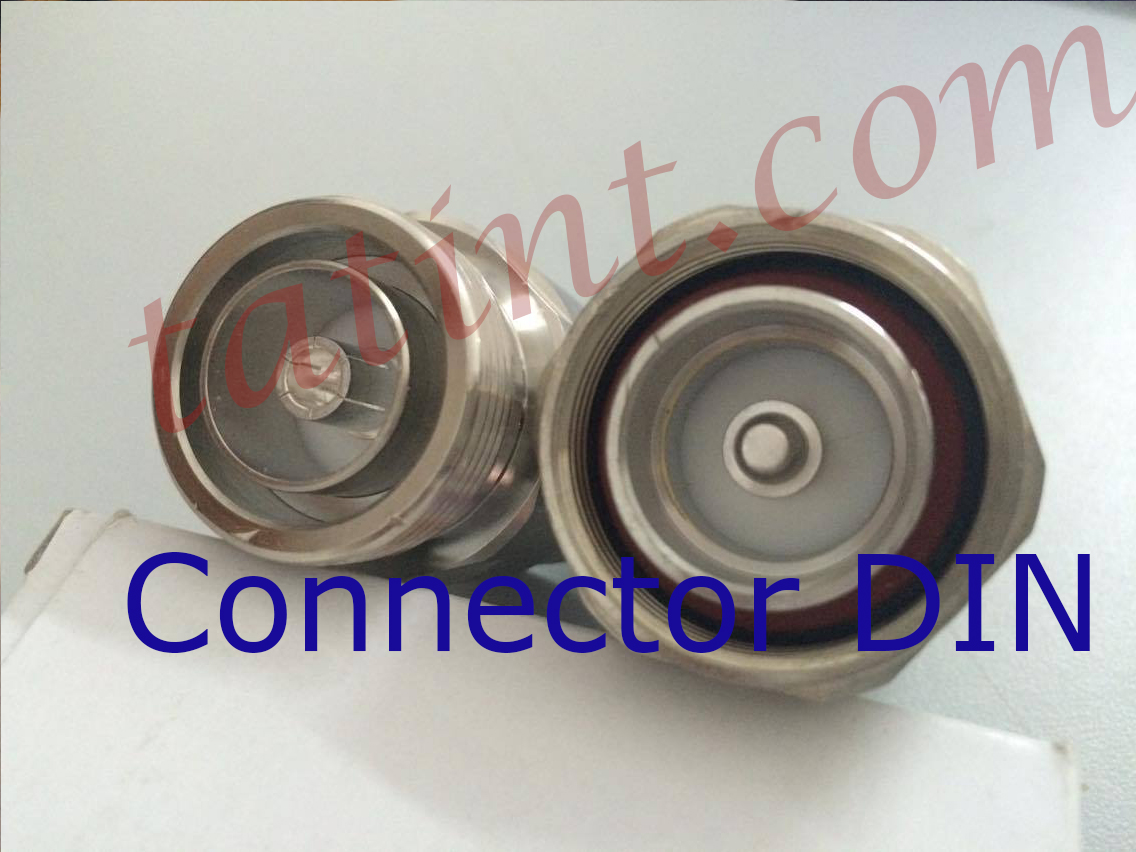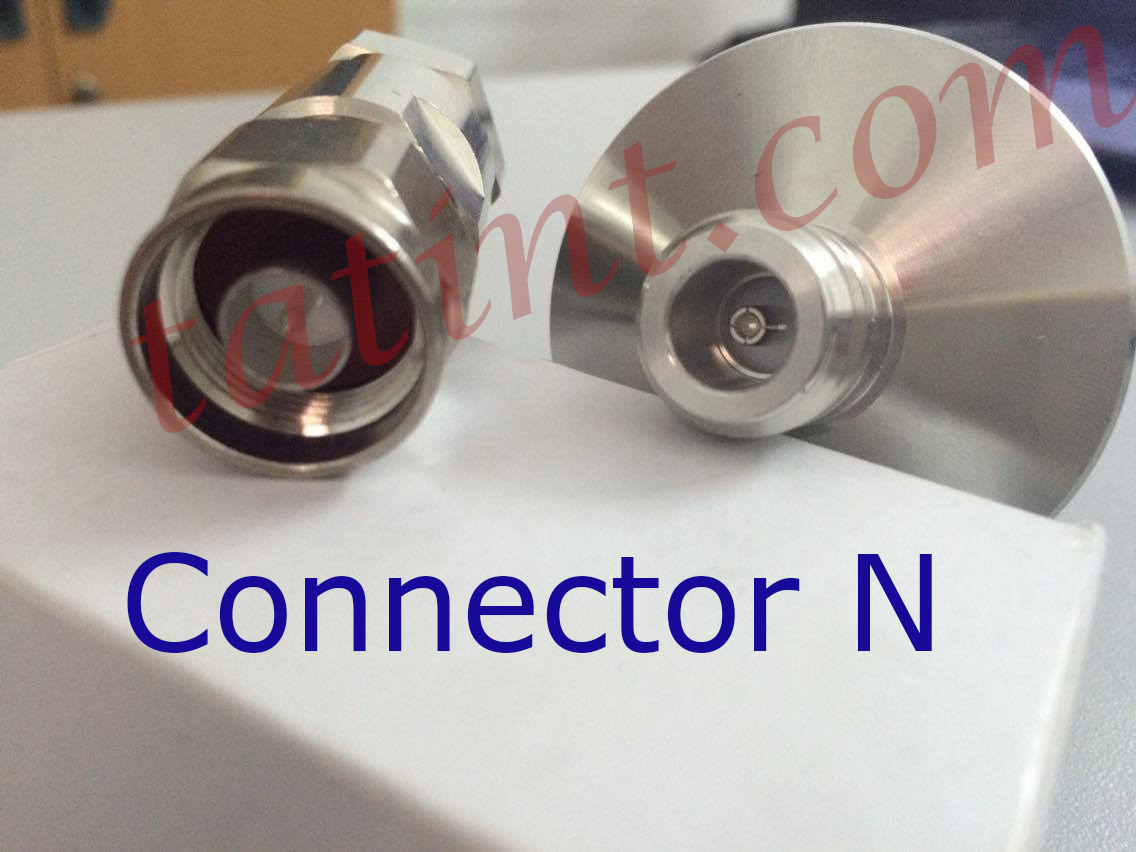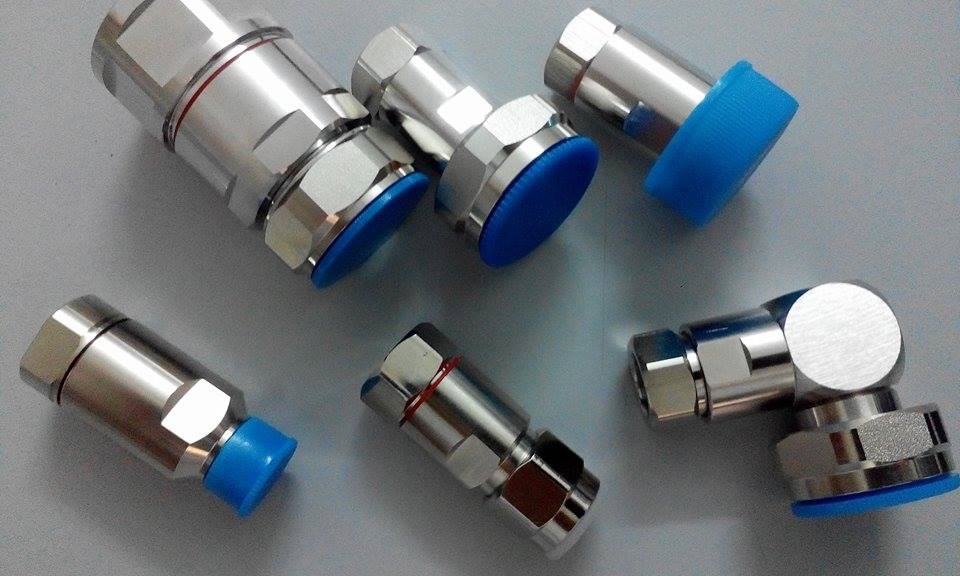Brief understanding about all types of connectors in the market today (Part 1)
There are many types of connectors; each type has hundreds of sample with different effects. So, How can we distinguish them? The below article will show you in detail about how to recognize and classify all types of popular connectors nowadays.
Which types of connector are there?
There are many ways of classification; however, the most common way of classification is classifying into two types: DIN and N.
DIN connectors are connectors with even and flat needles, the size of tails changes from 1/4 '' to 1 5/8 ''.

N Connectors are connectors with sharp-pointed needles and the tails are different for the types of cables which have the sizes from 1/4’’ to 1- 5/8’’.

The differences between N and DIN (the most important)
N Connectors are used earliest, the characteristic of N Connectors is having small and sharp-pointed needles, which leads to low transmission capacity. After a period of developing time, the demand of transmission increases, requests of performance are higher. For all of those reasons, it is necessary to have a better type of Connector and since then, DIN Connectors have appeared with large contact surfaces leading to good transmission capacity. The two compared parameters below will distinguish in detail DIN and N connectors.

Comparison about electrical efficiency
Intermodulation (IM): the modulation of frequency, signal, electrical, efficiency – the smaller IM is, the higher electrical efficiency.
DIN Connectors are more superior than N Connectors because of the following reason:
The cross - section of contact surface of DIN Connectors is larger than N Connectors, which leads to better transmission capacity, higher efficiency. The structure of DIN Connectors is having even and flat needles which make the contact surface larger, equivalent to almost 360 degree, while N Connectors are small and they have sharp-pointed needles leading to higher draining of electrical power.
So, why are N Connectors still used in the works today?
DIN Connectors have the capability of better optimization, small intermodulation (small IM) but because of that reason, they are not widely used, only for some cases (when can DIN Connectors be used? This question will be answer briefly below). In contrast, N connectors with the flexibility are used more widely.

The basic difference between these two Connectors is “Maximum frequency”. One below equation for calculating the value of Maximum Frequency (F max) of the two Connectors will distinguish in detail these two types:
The sizes of the standard interface of the types similar to N connector are A = 0.276 N "and B = 0.120". In which, the air condition, max frequency Fmax = 19GHz. With a safe coefficient is 10%, the usable frequency range is from 12- 19 GHz. With such a large bandwidth, N Connectors are used in many telecom projects.
In contrast, the size of interface of 7/16 DIN is A = 7mm and B = 16mm, the result is Fmax = 8.3GHz. Maximum frequency range of DIN Connectors is from 6- 8 GHz – a short frequency range which helps DIN Connector to optimize usage efficiency.
.jpg)
With the above parameters, DIN Connectors are used widely in transmission lines with high power such as the transmission connections of mobile communication, mobile radio and applications with lower frequencies. For N Connectors, they are commonly used more in short-wave transceiver channels, no need high performance.
Welcome to read the next article of DIN and N connectors on 27 May 2016
Other news
- Tìm hiểu về cấu tạo sợi cáp quang và phân loại cáp
- Extreme Announces First Integrated Solution Following Avaya Acquisition
- The design and the applications of twisted –pair cables
- Tìm hiểu về bảng đồng tiếp địa chống sét
- Characteristics and the usage of resin cable ties in the telecommunications industry
- Types of Fiber Optic Patch Cord
- Khuyến Nghị Sử Dụng Máy Đo Ethernet – EXFO ETS-1000 / ETS-1000L
- Khuyến Nghị Sử Dụng Máy Đo Phân Tích Phổ - Anritsu MS2711E
- The differences between Optical Fibers and Coaxial Cables
- Electric Cables – Square Power Cables - Kingsignal | T.A.T Telecommunications
.png)












